Anthranilic acid
Synonym(s):2-AA;2-Aminobenzoic acid;Anthranilic acid
- CAS NO.:118-92-3
- Empirical Formula: C7H7NO2
- Molecular Weight: 137.14
- MDL number: MFCD00007712
- EINECS: 204-287-5
- SAFETY DATA SHEET (SDS)
- Update Date: 2025-12-17 09:50:35
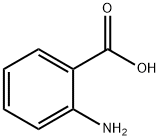
What is Anthranilic acid?
Chemical properties
White to off white crystalline powder
The Uses of Anthranilic acid
Anthranilic acid can be used in organic synthesis to generate the benzyne intermediate. It is used as an intermediate for production of dyes, pigments, and saccharin. It and its esters are used in preparing perfumes to imitate jasmine and orange, pharmaceuticals and UV-absorber as well as corrosion inhibitors for metals and mold inhibitors in soya sauce.
The Uses of Anthranilic acid
Dyes, drugs, perfumes, and pharmaceuticals.
Definition
ChEBI: An aminobenzoic acid that is benzoic acid having a single amino substituent located at position 2. It is a metabolite produced in L-tryptophan-kynurenine pathway in the central nervous system.
What are the applications of Application
2-Aminobenzoic acid is called vitamin L1; it enhances the milk production of cows. The major use of 2-aminobenzoic acid is as an intermediate for dyes. As its occurrence suggests, it is an intermediate for indigo synthesis. Mordant Brown 40 and Vat Violet 13 are other derivatives. 4-Hydroxy-1-methyl-carbostyril [1677- 46-9] is an important derivative used in making dyes and pigments. Its methyl and ethyl esters are used as fragrances for toiletries. In the pharmaceutical industry, it is used as an intermediate for tranquilizers and antiphlogistics.
Synthesis Reference(s)
Chemical and Pharmaceutical Bulletin, 29, p. 1159, 1981 DOI: 10.1248/cpb.29.1159
Journal of the American Chemical Society, 107, p. 5008, 1985 DOI: 10.1021/ja00303a038
General Description
Odorless white to pale-yellow or tan crystalline powder with a sweetish taste.
Air & Water Reactions
Anthranilic acid may be sensitive to prolonged exposure to air and light. Insoluble in water.
Reactivity Profile
Anthranilic acid is incompatible with strong oxidizers.
Hazard
Questionable carcinogen.
Fire Hazard
Anthranilic acid is combustible.
Safety Profile
Moderately toxic by ingestion and intraperitoneal routes. Experimental reproductive effects. Human mutation data reported. Questionable carcinogen with experimental tumorigenic data. Combustible. When heated to decomposition it emits toxic fumes of NOx.
Purification Methods
Crystallise anthranilic acid from water (charcoal). It has also been recrystallised from 50% aqueous acetic acid. It sublimes in a vacuum. [Beilstein 14 IV 1004.]
Properties of Anthranilic acid
| Melting point: | 144-148 °C(lit.) |
| Boiling point: | 251.96°C (rough estimate) |
| Density | 1.412 |
| vapor density | 4.7 (vs air) |
| vapor pressure | 0.1Pa at 52.6℃ |
| refractive index | 1.5323 (estimate) |
| Flash point: | 150°C |
| storage temp. | Store at 0°C |
| solubility | ethanol: may be clear to slightly hazy |
| form | powder |
| pka | 2.108(at 25℃) |
| color | White to pale yellow crystalline |
| PH Range | Non-B uorescence (1.5) light blue B uorescence (3.0) |
| Water Solubility | 5.7 g/L (25 ºC) |
| Merck | 14,422 |
| BRN | 471803 |
| Stability: | Stable. Incompatible with strong oxidizing agents. |
| Major Application | bottom antireflective coatings, semiconductor devices, inks, hair dyes, cosmetics, treatment of chronic inflammatory diseases, depression |
| CAS DataBase Reference | 118-92-3(CAS DataBase Reference) |
| NIST Chemistry Reference | Anthranilic acid(118-92-3) |
| IARC | 3 (Vol. 16, Sup 7) 1987 |
| EPA Substance Registry System | Anthranilic acid (118-92-3) |
Safety information for Anthranilic acid
| Signal word | Danger |
| Pictogram(s) |
 Corrosion Corrosives GHS05 |
| GHS Hazard Statements |
H318:Serious eye damage/eye irritation |
| Precautionary Statement Codes |
P280:Wear protective gloves/protective clothing/eye protection/face protection. P305+P351+P338:IF IN EYES: Rinse cautiously with water for several minutes. Remove contact lenses, if present and easy to do. Continuerinsing. |
Computed Descriptors for Anthranilic acid
Anthranilic acid manufacturer
New Products
4,4-Difluoropiperidine hydrochloride tert-butyl 9-methoxy-3-azaspiro[5.5]undecane-3-carboxylate Indole Methyl Resin N-Isopropylurea N,N-Dicyclohexylcarbodiimide(DCC) MELDRUMS ACID 5-METHYLISOXAZOLE-4-CARBOXYLIC ACID Magnessium Bis glycinate Zinc ascorbate 1-bromo-2-butyne 2-acetamidophenol 9(10H)-anthracenone Erythrosin B, 4-Piperidinopiperidine 2-((4-morpholinophenylamino) (methylthio) methylene) malononitrile 2,4-dihydroxybenzaldehyde 3-(4-morpholinophenylamino)-5-amino-1H-pyrazole-4-carbonitrile Methyl 2-methylquinoline-6-carboxylate 2,6-dichloro-4-nitropyridine 4-Bromo-2-chlorobenzonitrile 2-(benzylamino)acetic acid hydrochloride 4-(tert-Butoxycarbonylamino)but- 2-ynoic acid 3,4-dihydro-2H-benzo[b][1,4]dioxepine 1-Phenyl-1-cycloprppanecarboxylicacidRelated products of tetrahydrofuran
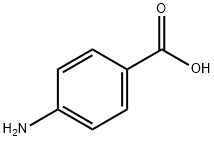
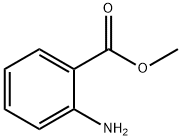
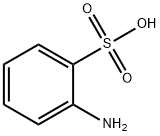
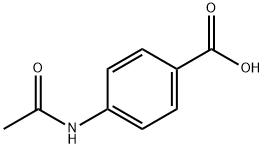

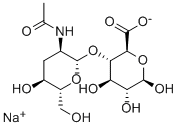


You may like
-
 3-(4-amino-1-oxoisoindolin-2-yl)-1-methylpiperidine-2,6-dione 98%View Details
3-(4-amino-1-oxoisoindolin-2-yl)-1-methylpiperidine-2,6-dione 98%View Details -
 1-methylindoline-2,3-dione 98%View Details
1-methylindoline-2,3-dione 98%View Details
2058-74-4 -
 614-19-7 98%View Details
614-19-7 98%View Details
614-19-7 -
 3112-85-4 Methyl phenyl sulfone 98%View Details
3112-85-4 Methyl phenyl sulfone 98%View Details
3112-85-4 -
 20677-73-0 (2,2-diethoxyethyl)methylamine 98%View Details
20677-73-0 (2,2-diethoxyethyl)methylamine 98%View Details
20677-73-0 -
 3-(4-(hydroxyamino)-1-oxoisoindolin-2-yl)piperidine-2,6-dione 98%View Details
3-(4-(hydroxyamino)-1-oxoisoindolin-2-yl)piperidine-2,6-dione 98%View Details -
 57381-49-4 2-bromo-4-chlorobenzonitrile 98%View Details
57381-49-4 2-bromo-4-chlorobenzonitrile 98%View Details
57381-49-4 -
 4,6-dichloropyrimidine-5-carbaldehyde 98%View Details
4,6-dichloropyrimidine-5-carbaldehyde 98%View Details
5305-40-8
